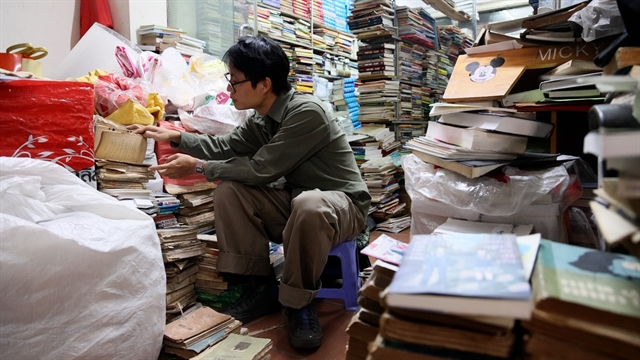 Life & Style
Life & Style

An exhibition of 200 photos and documents of the Nghê – a sacred animal that guards temples and communal houses – has been in display at the central city’s Fine Arts Museum, promoting the unique feature of the traditional art of Việt Nam that had been preserved in the community for centuries.
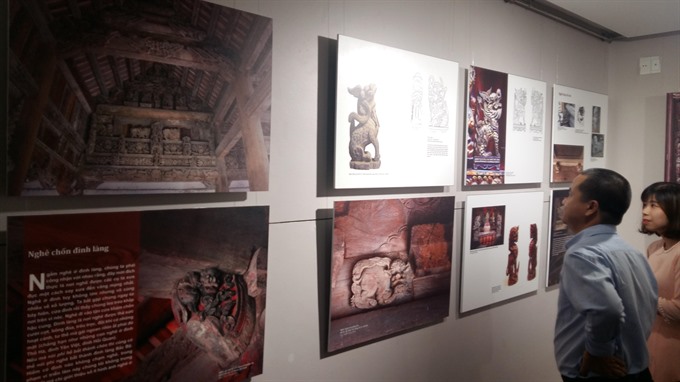 |
| Interested: Visitors view photos of the Nghê at an exhibition in Đà Nẵng city. — VNS Photo Công Thành |
ĐÀ NẴNG — An exhibition of 200 photos and documents of the Nghê – a sacred animal that guards temples and communal houses – has been on display at the central city’s Fine Arts Museum, promoting the unique feature of the traditional art of Việt Nam that has been preserved in the community for centuries.
The exhibition aims to raise awareness and recognition of the gentle animal of Việt Nam alongside images of sacred animals from China, Japan and Korea including lions, kylin, unicorn or pixiu (a Chinese mythical hybrid creature).
The collection was part of research team including Trần Hậu Yên Thế, Nguyễn Đức Hòa and Hồ Hữu Long that published in a book on, titled Phác Họa Nghê – Gã Linh Vật Bên Rìa (Sketching Nghê – a Sacred Guardian Animal) from 2007.
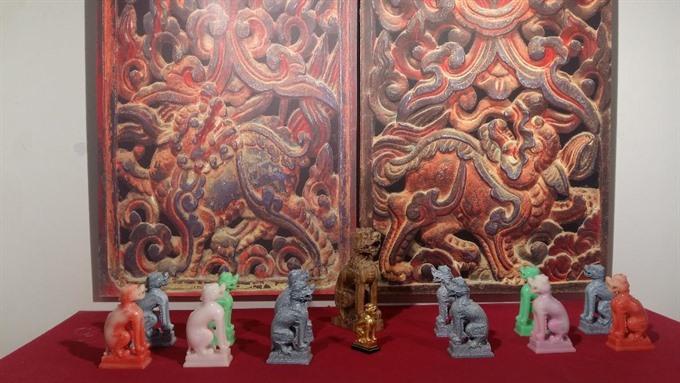 |
| Gentle creatures: Stone sculptures of the Nghê and wood carving of the Nghê. — VNS Photo Công Thành |
“The exhibition was a communication campaign to promote the image of Vietnamese Nghê nationwide. It aims to describe the art of sculptures of the sacred animal,” said deputy minister of Culture, Sports and Tourism, Đặng Thị Bích Liên.
“We hope people and craftsmen will recognise details of the sacred animal that our ancestors left for next generation. These sculptures are found at gates and doors of pagodas, temples, communal houses in Việt Nam,” she said.
Liên said the ministry and local governments have removed wrong installations of sculptures of lion, kylin, unicorn or pixiu at some pagodas and temples in the past.
She said there was confusion in recognition of the Nghê of Việt Nam and Chinese lion or kylin four years ago when some sculptures of imported samples of lion or kylin were displayed at public sites and pagodas and temples in Việt Nam.
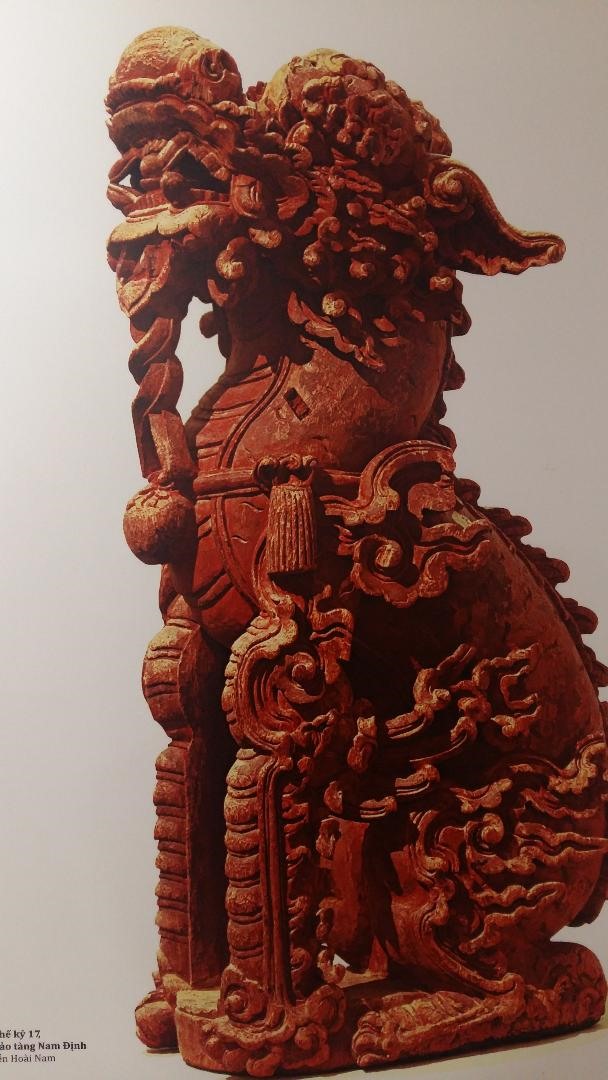 |
| Wooden version: A sample of the Nghê in wood sculpture. — VNS Photo Công Thành |
Nguyễn Đức Bình, an official from the ministry also said an inspection had been done to remove inappropriate sculptures.
Bình said some sculptures – which were made in the image of lions or kylins – were donated to pagodas and temples for installation.
“We found that many sculptures were wrongly displayed. Almost all donors could not recognise the different between Nghê, lion or kylin,” Bình said.
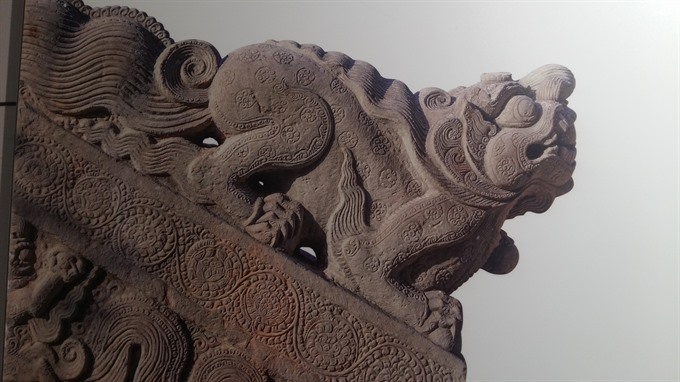 |
| On guard: A photo of the Nghê – a sacred animal that guards temples and communal houses displays at Đà Nẵng Fine Arts Museum in an exhibition. Two hundreds of photos and documents of the Nghê are on display at the museum from August 15-30. — VNS Photo Công Thành |
Sculptor Phạm Bá Ngọc, director of Vạn Bảo Ngọc company, said local stone sculptors had for a long time made copies of lions or kylin as souvenirs.
“We witnessed that craftsmen made copies instead of designing or creating art features the sacred animals,” he said.
Ngọc said he donated two stone sculptures of the Nghê – that were displayed at the national special relic of King Đinh Tiên Hoàng’s temple in Ninh Bình province – to Đà Nẵng’s Fine Art Museum.
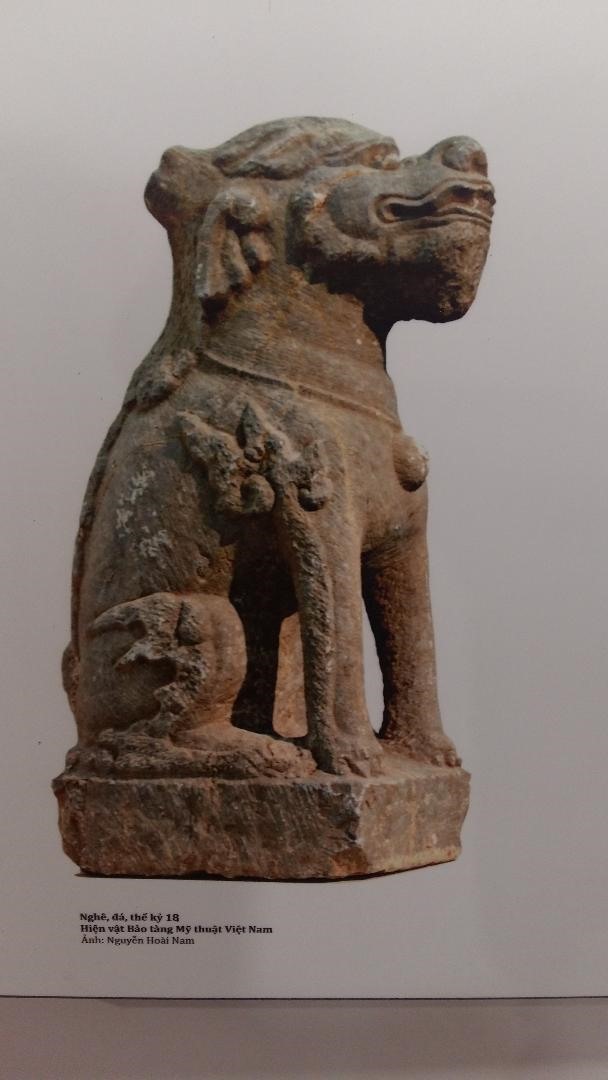 |
| Dog like: Stone sculpture of the Nghê. — VNS Photo Công Thành |
He hoped that Đà Nẵng – which is seen as a tourism hub of Việt Nam – would transmit the image of the Nghê.
The ministry also presented 50 copies of books – Phác Họa Nghê – Gã Linh Vật Bên Rìa (Sketching Nghê – a Sacred Guardian Animal) to the museum and local stone sculptors in Non Nước Stone carving village in Đà Nẵng.
It explores the appearance of the animal at holy sites in other regions. The Nghê, a mythical creature with a lion’s head, a long tail and a dog-like body, has appeared at temples, pagodas and mausoleums serving ordinary people as well as royal figures.
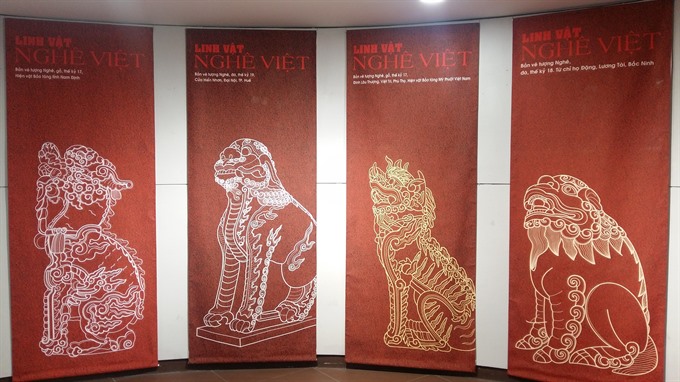 |
| For all to see: Banner of the Nghê Việt Exhibition in Đà Nẵng. — VNS Photo Công Thành |
It was brought to Việt Nam possibly in the 1st century AD by businessmen and Buddhist monks from India and central Asia. The Nghê was popular during the Lý reign (1009-1225). Over time, the nghê has been carved in diverse forms and materials, displaying various facial expressions and characteristics. It has appeared in various positions at the spiritual sites of the Vietnamese people.
The traditional stone carving trade of Non Nước Village, at the foot of Ngũ Hành Sơn (Five Marble) Mountains, has 5,000 craftsmen. The stone sculpture craft was introduced in the village from the 17th century.
The exhibition will last until the end of this month. — VNS